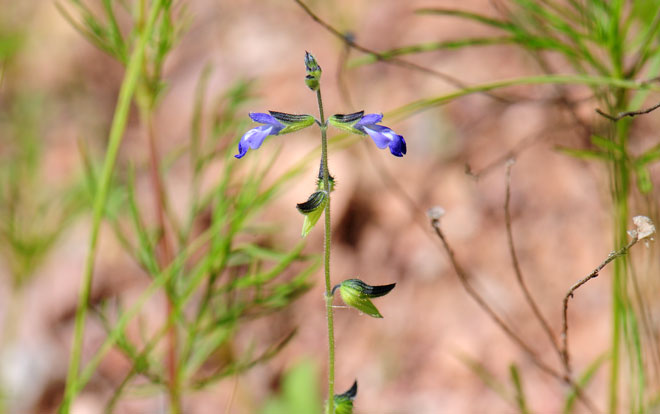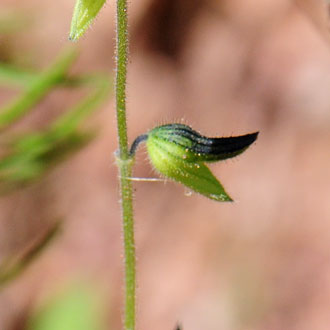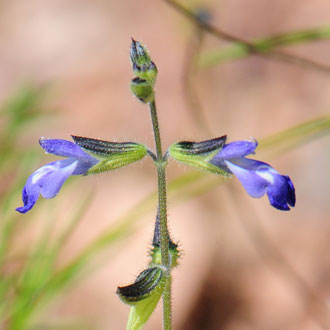Salvia subincisa, Sawtooth Sage



Scientific Name: Salvia subincisa
Common Name: Sawtooth Sage
Also Called: Saw-tooth Sage, Sharptooth Sage
Family: Lamiaceae or Mint Family
Synonyms: ()
Status: Native
Duration: Annual
Size: Up to 18 inches more or less.
Growth Form: Forb/herb; small, erect,
Leaves: Green; opposite leaves with sawtooth margins.
Flower Color: Purple, white inside the lower lip, flowers tubular, 1 or 2 in whorls, calyx turns green or greenish-purple and surrounds the fruit, which is a nutlet.
Flowering Season: August to September.
Elevation: Below 5,500 feet.
Habitat Preferences: Plains and mesas, sandy areas and near roadsides.
Recorded Range: Relatively rare in the United States where it is native to AZ, NM and marginally in TX. In Arizona Sawtooth Sage is found in central northwest (Coconino, Yavapai Counties) and in the south (Pima, Santa Cruz and Cochise Counties) and in the southeast (Greenlee and Graham Counties).
North America & US County Distribution Map for Salvia subincisa.
U.S. Weed Information: No information available.
Invasive/Noxious Weed Information: No information available.
Wetland Indicator: No information available.
Threatened/Endangered Information: No information available.
Comments: Photo above taken near Patagonia Mountain, Coronado National Forest, Santa Cruz County, Arizona.
Looks similar to: Lanceleaf Sage, Salvia reflexa.
Also see in Southwest Desert Flora; Chia, Salvia columbariae, and Autumn Sage, Salvia greggii.

